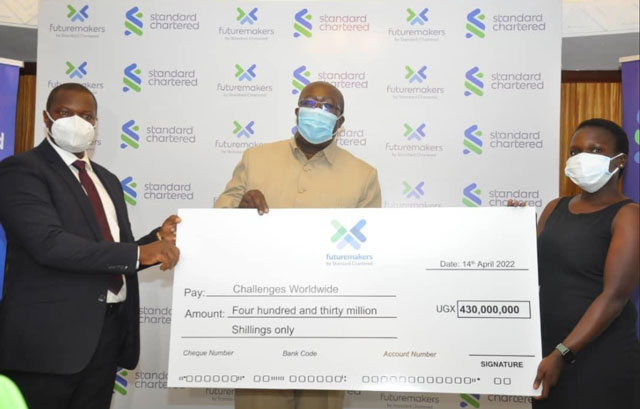
Kampala, Uganda | THE INDEPENDENT | Standard Chartered Bank Uganda in partnership with Challenges Worldwide, a Kampala-based business development consultancy, has launched the scale-up of the Youth to Work (Y2W) phase III programme worth Shs430 million.
The hybrid event that had participants attend both physically and online, took place in Kampala and was presided over by the state minister for Labour, Employment and Industrial Relations, Charles Okello Engola on Thursday.
Executives said, the “Youth to Work” is the flagship employability project under Future makers by Standard Chartered Foundation.
Godfrey Sebaana, the acting CEO for Stanchart said, it is the bank’s global initiative to tackle inequality and promote greater economic inclusion for young people in local communities through the pillars of entrepreneurship, employability and education.
The phase III project will support 45 graduates directly transition into employment and training for over 600 youth within the community.
The Youth to Work approach uses a 4-month work placement-based youth-led initiative to equip young people with employability skills and partner them with local SMEs to provide structured Business Development Services.
Margaret Kigozi, the head, corporate affairs, brand and marketing, Standard Chartered Bank said, “As a bank our intention is to fundamentally transform the lives of the youths by enabling them build their own bright futures and navigate the various challenges they are faced with. This is in line with our brand promise, ‘Here for good’ which demonstrates our commitment to stand by our clients and our local communities. We will therefore continue to work in partnership with several NGOs and government to strengthen the capacity of young people, especially girls and people with disabilities.”
 The Independent Uganda: You get the Truth we Pay the Price
The Independent Uganda: You get the Truth we Pay the Price




I have liked the program